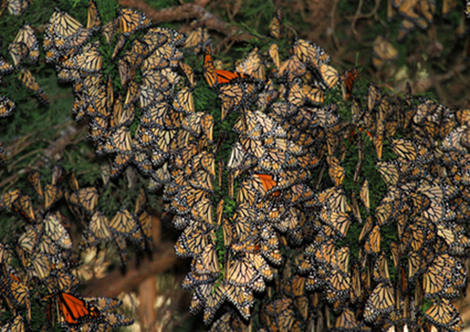
Nearly two years ago in a column about migration, I wrote about the long journey carried out by several generations of monarch butterflies to their winter grounds. Monarchs from New Hampshire overwinter in Mexico while those from west of the Rockies head to several places in California. On arrival, they cling to tree branches, forming dense clusters. Little did I know that I would have a chance to see them in their winter world myself, but that’s just what happened on a day in late January as we drove along the central California coast.
Pismo Beach is a small town on the Pacific Coast Highway where approximately 25,000 monarchs form a colony every winter, starting in late October. In a small stand of eucalyptus, many trees were completely covered in clusters of monarchs – a truly remarkable sight! Volunteer docents at the park explained that the butterflies form a cluster so that each one hangs with its wings down over the one below it, like shingles on a roof. This arrangement provides shelter from wind and rain and its mass serves to keep the cluster together during high winds.
Nobody knows why the butterflies return to their wintering places but scientists suspect the monarchs have a GPS-type system that leads them between their summer and winter sites.
Now that I am back in Andover I encourage you to communicate with me about our own natural world. If you have observations, questions, or experiences to share with other Beacon readers, please contact me at AndoverNaturally@nullgmail.com so I can include your news in the next issue.